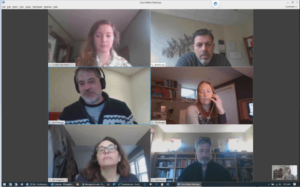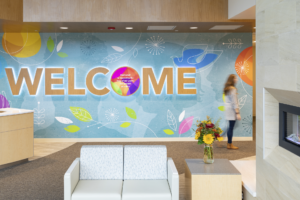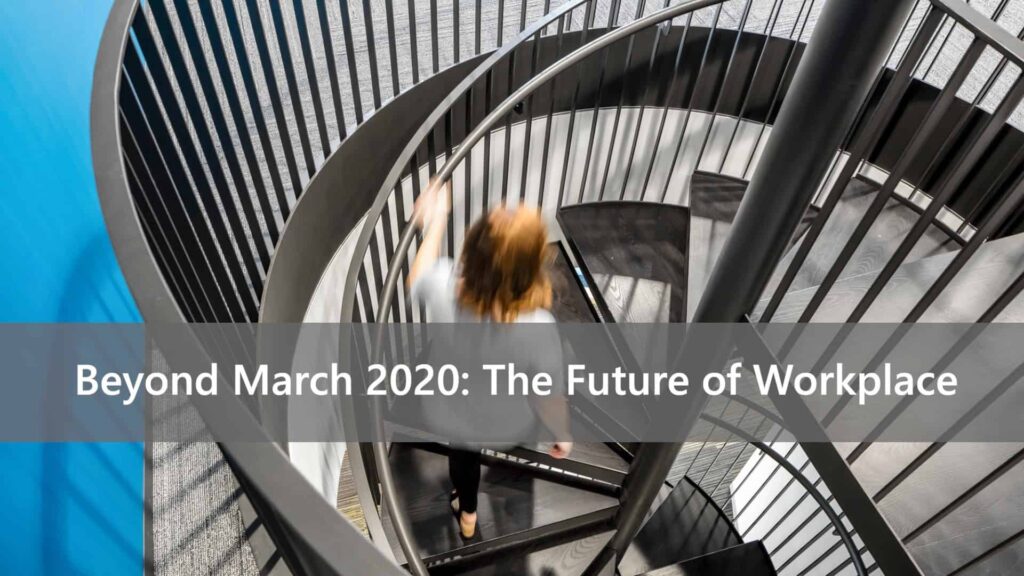I am an architect and designer working from home.
I am a university design studio instructor who is teaching hands-on topics through computers.
I am a mom of a child whose daycare closed from COVID-19.
Like everyone, my life has been forever impacted.
As designers, educators, and humans it is in our nature, and our jobs, to leverage what we know about the current situation and use it to inform the future. As millions rapidly move to a remote working strategy, we’re specifically asking: How can COVID-19 and other global crises inform what the workplace will need to support the future?

In December 2019, during a design thinking workshop, “Defining the Future of Work” at the University of Wisconsin–Madison, cross-discipline students, business leaders, educators, and designers spent four hours trying to define what the future of work meant to them. The students and business leaders, together, created the ideal workplace and then individually ranked their top qualities of what they perceived to be in it, along with what they perceived to be future disruptors.
This was a pre-COVID-19 workshop, where both students and business leaders listed comfort and cultural integrity among top values. As disruptors, they both trended to the categories of lack of community/remote work, social/lifestyle, and technology as being three underlying disruptors.
Today, all these disruptors are affecting workplaces around the globe to the extreme, along with hindering the workplace factors that they value the most. Through remote work, we are leveraging technology to support drastic lifestyle changes but also losing part of that cultural integrity, creativity, comradery, and innovation that comes from that spontaneous cross-collaboration which happens in an office.
If asked these questions again post COVID-19, would the participants’ answers be the same? Would the disruptors become the values, including integrated office technology, flexible work hours, location, style? Will resiliency, health, wellbeing, and safety rise to the top?
Given our current situation, what would you say are your most coveted values of the workplace? What do you see as some future disruptors of the workplace?
BWBR Design Thinking Series: The Future of the Workplace
In the coming weeks, we will join with business and community partners, leaders, educators, and IT and facilities to discuss the workplace, the rapid changes, the challenges, and how it will be forever changed by COVID-19. Topics planned to be covered include:
HUMAN-CENTERED DESIGN: The human connection is so vital to our ability to innovate, but also extremely important to our resiliency and mental health. Human-centered design will be extremely important to physical offices moving forward. The ability to support someone’s mental health and physical wellbeing has been a topic prior to COVID-19 and will be even more moving forward. So how can the workplace of the future support one’s resiliency and wellbeing?
CHANGE MANAGEMENT: Companies often ease their team into change management, but in the wake of COVID-19, they are thrust into the deep end facing the disruptors of remote work, technology, and lifestyle change. As Erik Brynjolfsson, director of the MIT Initiative. On the Digital Economy, noted, in normal times habits slowly change, and “then you have a shock like this that can change everything,”
If some predictions come true, 25 percent of employees will continue to work from home post pandemic. While studies show they can be more productive, they also lose the creativity, community and innovation that comes from being part of the office culture. What does this mean for organizations and the workplace itself?
MENTORING IN THE DIGITAL AGE: Mentoring from a distance is difficult; teaching new technical and even soft skills can be a struggle from a distance. Will more introverted people, who are not as outspoken during meetings and creative sessions struggle to get a word in edgewise if it is all based on digital technology? Will those who thrive on a strict schedule to keep them on task struggle if work becomes fully remote? What about the social butterflies? The workplace of the future may change, so how will it support both the teacher and student?
THE PHYSICAL OFFICE AND AGILE SPACES: Some are saying physical offices and co-working is dead. Others say when normal working conditions return, they might be exactly what is needed – a place to come together and bounce ideas off people that you normally wouldn’t interact with on a day-to-day basis. That means that the physical office space may become more collaborative, may have fewer permanent workstations, and may become more agile, supporting those that are in the office that day. What are the day in the life stories of the people using the physical office and how might they fluctuate in the years to come?
These video discussions will be recorded and shared through our site and social media channels.
To say we are in uncharted territory is apparent. Coming out of this will be learnings, but it will also require everyone’s inspiration and collaboration to imagine the future of work. There will be a post March 2020, a world reshaped by COVID-19. What we learn from this will help us prepare for the future workplace.








